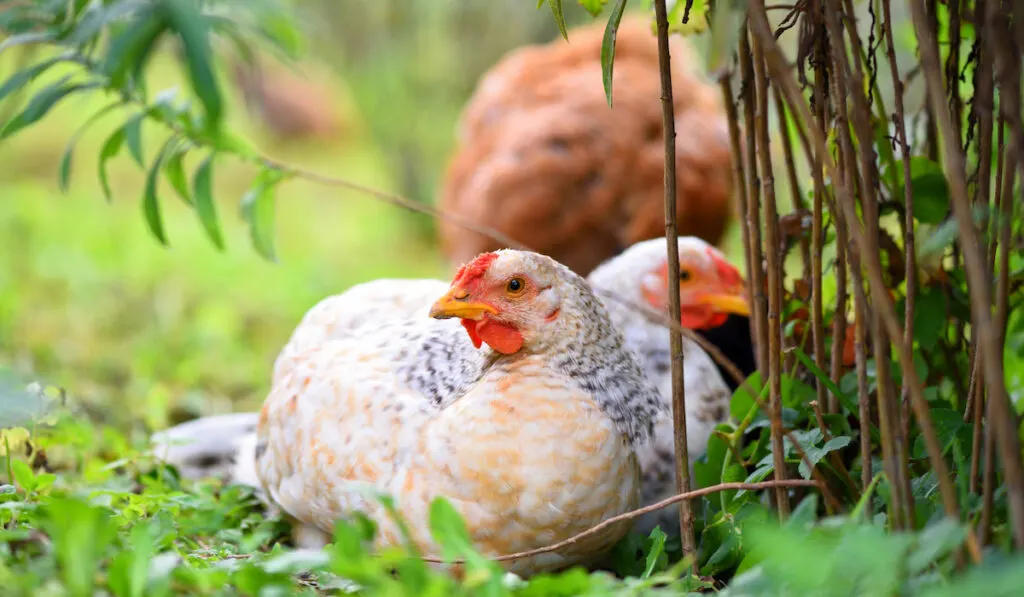Arizona is known for its extreme climate, which demands being extra careful when selecting the type of chicken breed to keep for eggs.
While there are a variety of breeds to choose from, some aren’t hardy enough to endure extreme cold or hot weather.
Here are the top egg-laying chickens that can accommodate the lows and highs of Arizona’s weather:
- Rhode Island Reds
- Australorp
- Ameraucanas
- White Leghorns
- Andalusian
- Naked Neck
- Buff Orpington
- Wyandotte
- Sussex
Read on to learn about the types of chicken breeds you can keep for eggs in Arizona, their adaptability to Arizona’s climate, temperament traits, and egg-laying capacity.
Table of Contents
Arizona Climate
Arizona’s climate ranges from Arid to Semi-arid, with hot summers and mild winters. In fact, according to the National Weather Service report, 2022 was the 12th warmest year in the history of Phoenix.
Summers in Arizona are extremely hot and dry in the desert regions, as the daytime temperature can go up to 120°F (49°C) in areas such as Phoenix and Tucson.
However, the monsoon season brings heavy rainfall, which can relieve the intense summer heat.
Higher elevation areas like Flagstaff may experience a drop in temperature, which can go as low as 18°F/- 8°C.
Even so, the desert regions’ warm fall and mild winter tend to encourage outdoor activities, including farming.
Best Egg Laying Chickens to Keep in Arizona
Summary of Breeds
| Chicken Breed | Quantity of Eggs/Year | Egg Color/Size |
| White Leghorns | 150 – 320 | Large, white |
| Rhode Island Reds | Up to 300 | Medium-large, brown |
| Sussex | 200 – 300 | Large, light brown |
| Australorp | 250 – 300 | Medium, blue |
| Ameraucanas | 250 – 300 | Medium, light brown |
| Buff Orpington | 200 – 280 | Large, light brown |
| Wyandotte | 200 – 260 | Medium – large, Laced, Golden Laced, or Blue Laced Red |
| Blue Andalusian | 160 – 200 | Medium-large, white |
| Naked Neck | 150 – 200 | Large, brown |
1. White Leghorns Chicken
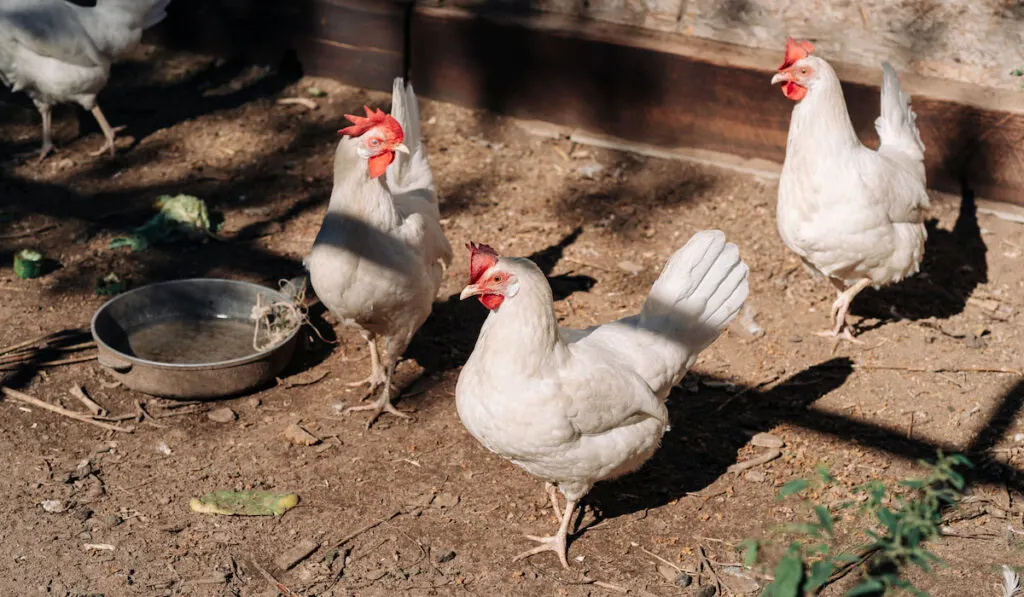
White Leghorns are one of the most popular egg-laying chickens around. They are great for both backyard and commercial industry production.
These chickens are fairly small, so you can fit as many of them as possible in your coop.
They eat less, so you don’t have to worry about them going hungry.
White Leghorns are great layers. They can produce up to 320 large white eggs a year. They begin to lay as early as 17 weeks.
Considering the climate, the breed can do well in warm weather. However, the chickens may be at risk of frostbite when exposed to extreme cold, so keeping them warm during winter at higher elevations is important.
2. Rhode Island Reds (RIR) Chicken
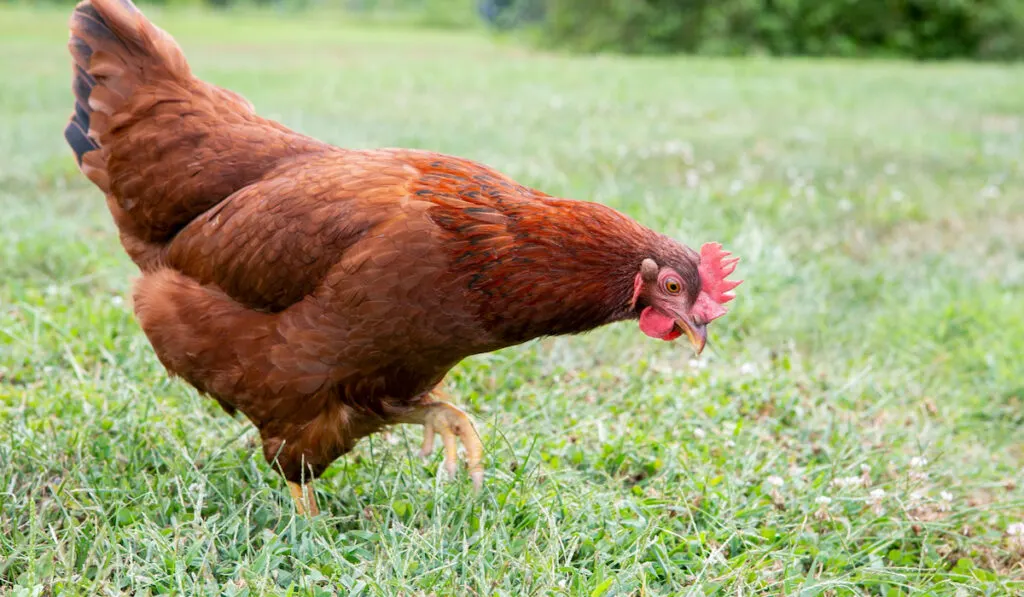
Rhodes Islands Reds are one of the top chicken breeds from Rhode Island. They are not only reliable but also easy to find.
The breed is bright red with a shining black tail. They have red eyes, distinct red-brown beaks, and chestnut red feathers.
The chickens are of high value as they can be used for eggs and meat. Since they are multipurpose, they are large and may require more food to produce quality eggs.
Rhode Island Reds lay eggs better than most other breeds.
They can give you between 200 and 300 eggs annually, averaging 5 to 6 weekly.
The conditions required to help the chickens grow are easy to achieve.
They are not easily affected by changes in temperature and can survive as high as over 100°F temperature and even sub-zero temperatures.
While these chickens aren’t easily predisposed to health issues, you’ll need to feed them with the proper food and water in the dry season.
Also, remember to shelter them adequately to protect them from the extreme sun rays.
3. Sussex Chickens
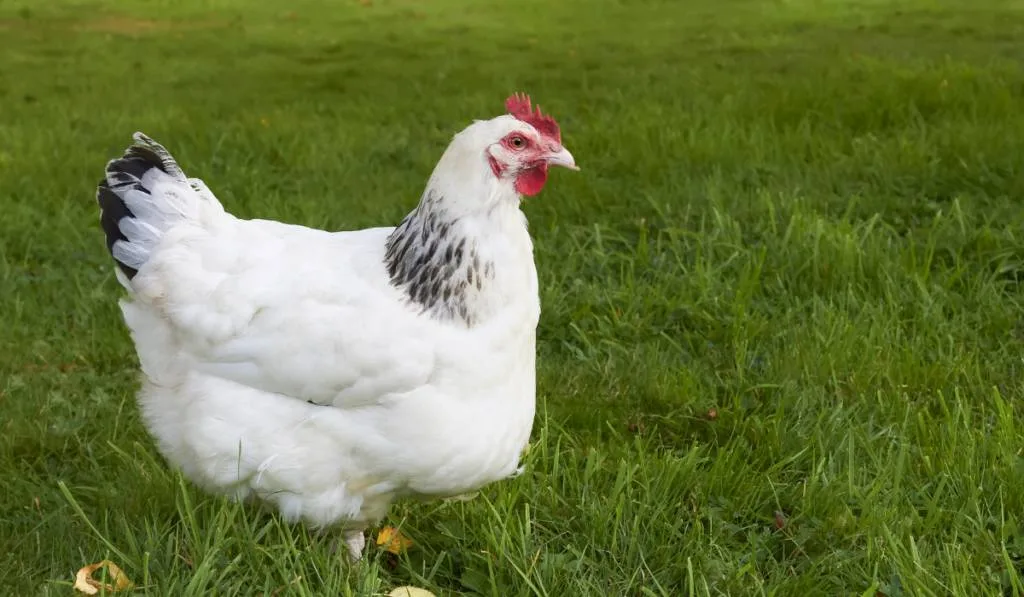
Sussex has been around for over a hundred years. It originates from Sussex County, Southeast England, and has various colors: white, buff, red, silver, brown, and coronation.
The chickens are a decent dual-purpose breed and can lay up to 300 large eggs yearly, with some going broody.
While they flourish in cold climates, they can also survive in hot environments with adequate shade and enough cool water.
4. Wyandotte Chicken
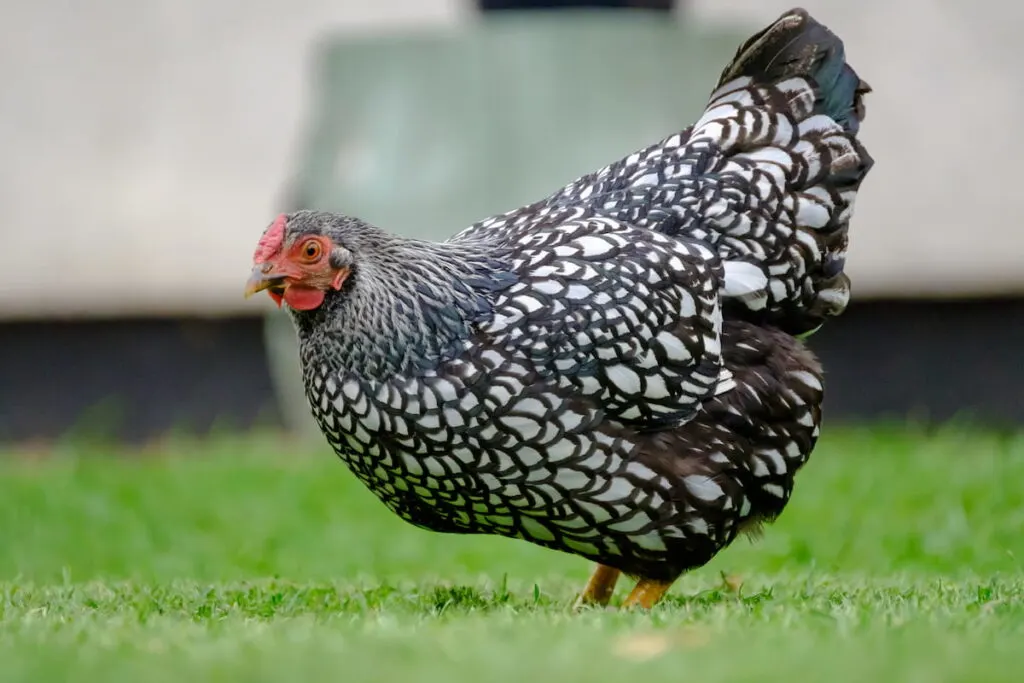
The Wyandotte chicken is one of America’s favorites. It originates from the Northeastern U.S. and is the first American breed to be bred for dual-purpose production.
A Wyandotte is quite a large chicken since they were originally bred to produce only meat.
Their size is attributed to the fluffiness of their feathers.
But despite being large, the Wyandotte chickens are docile and can be easily bullied around by other breeds in the coop.
They can do well in confinement, although allowing them to free-range can significantly improve their health.
Regarding their egg-laying capability, they are known to produce medium to large brown eggs at around 4 to 5 eggs per week. This can amount to roughly 260 eggs a year.
The Wyandotte chicken is built to withstand cold weather thanks to their fluffy feathers.
In addition, their small rose combs protect them from experiencing frostbite.
While they can survive warm temperatures, keeping them in the shade and providing a lot of cool water to keep them hydrated is recommended.
5. Australorp Chicken
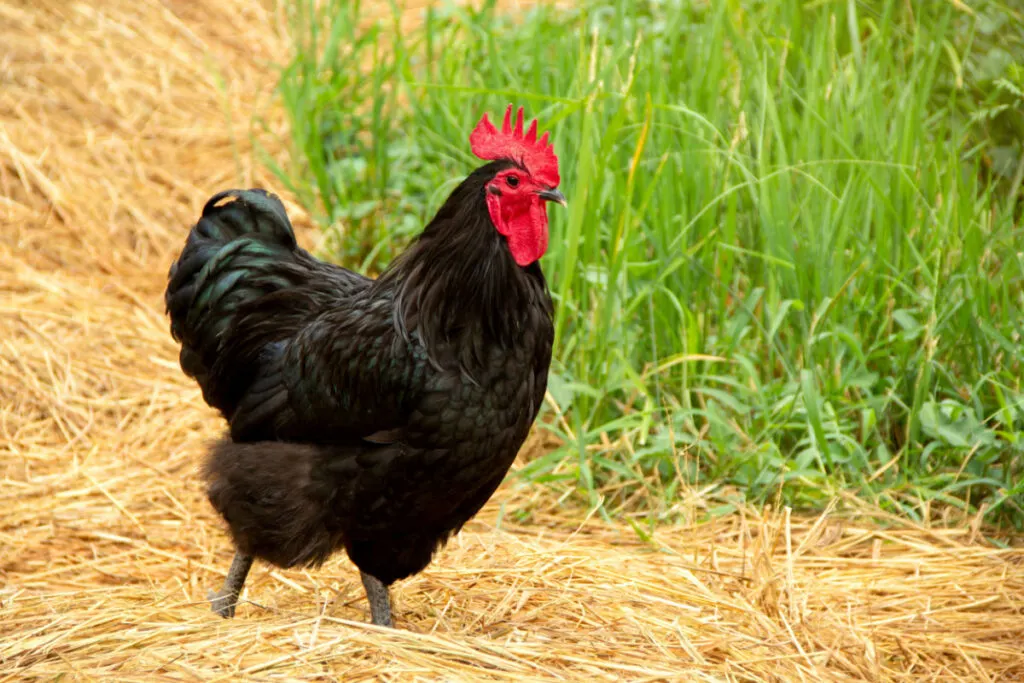
Australorp chickens have made a huge impression in the poultry industry due to their egg-laying ability.
The breed originates from Australia and is the honorary national bird in the country.
These birds are heavy with close-fitted soft feathers. They have an upright stance, well-rounded breasts, and a deep solid body.
The Australorp exists in white, blue, and black varieties. You may find buff, splash, and golden Australorp in South Africa.
These birds can tolerate confinement well. However, like most heavier, larger birds, they are active and enjoy free ranging. And while they are shy, they become friendlier with time.
Australorps are good at laying eggs and can give you an average of 250 eggs annually. They can produce around 5 light-brown medium-sized eggs per week.
Australorps can produce even more eggs in an industrial setting as their feeder and lighting are designed for maximum output.
Even though the Australorp is a hardy breed and can tolerate the heat well, they need adequate shade as they are more susceptible to heat stroke.
6. Buff Orpington Chicken
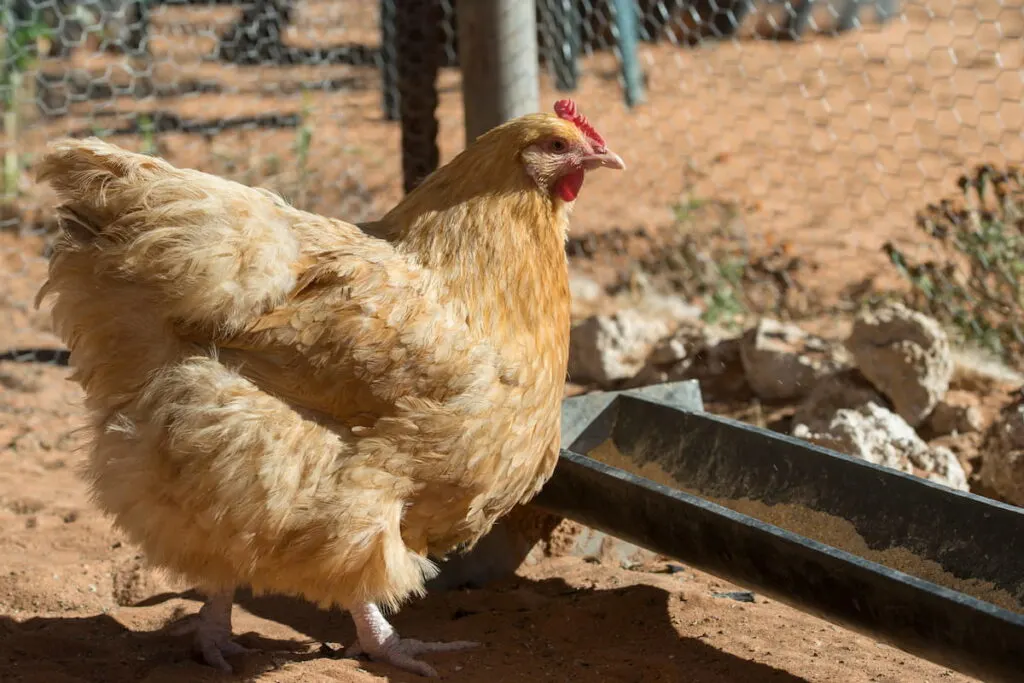
The Buff Orpington is one of the large dual-purpose breeds you can find in the market today. It has a heavy buff body with fluffy feathers.
The chickens are friendly and can also lay a decent quantity of eggs yearly. You can get up to 280 eggs a year on average.
Buff Orpington can do well in cold weather due to their fluffy feathering.
However, wet feathers can predispose them to premature death, so ensure they remain dry during spring.
Likewise, while they can tolerate warmer climates, you should provide them with adequate shade and ventilation during the day.
7. Ameraucana Chicken
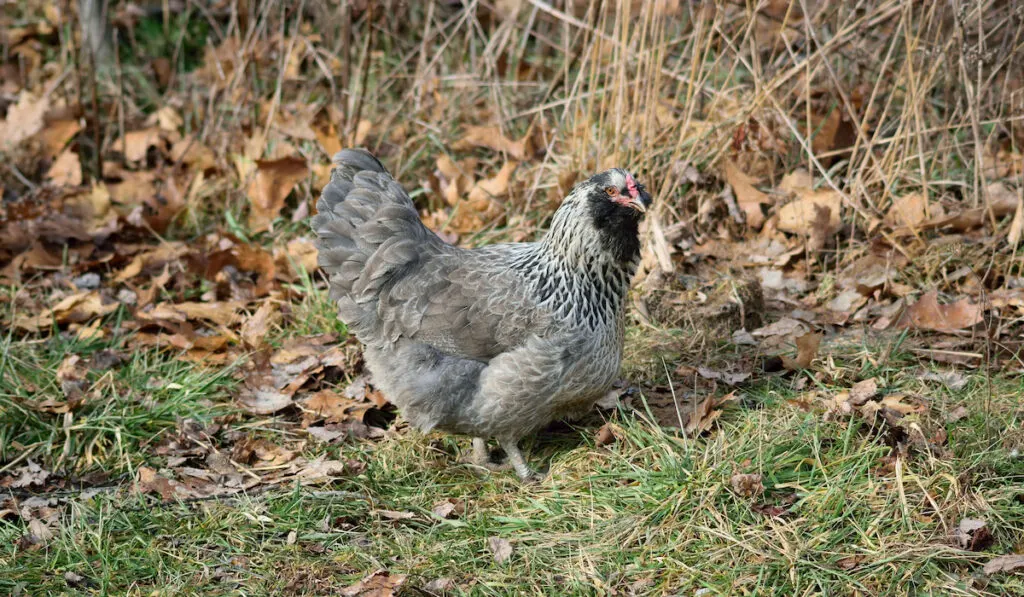
The Ameraucanas are rare chickens known for their blue eggs.
The color of Ameraucanas ranges from black and white to blue and wheaten. The color variety available makes them beautiful birds to keep.
The breed’s temperament is skittish or docile. The birds are generally friendly and enjoy human interaction but don’t love being cuddled. They are also fantastic foragers and are predator savvy.
The Ameraucana is a moderately good egg layer that can produce around 3 to 4 medium-sized light-blue eggs weekly. However, they can lay late so you may wait longer for your eggs.
The breed is winter-hardy but may not endure freezing temperatures if left in the open. They can only tolerate the winters well if you provide dry and draft-proof shelter.
8. Blue Andalusian Chicken
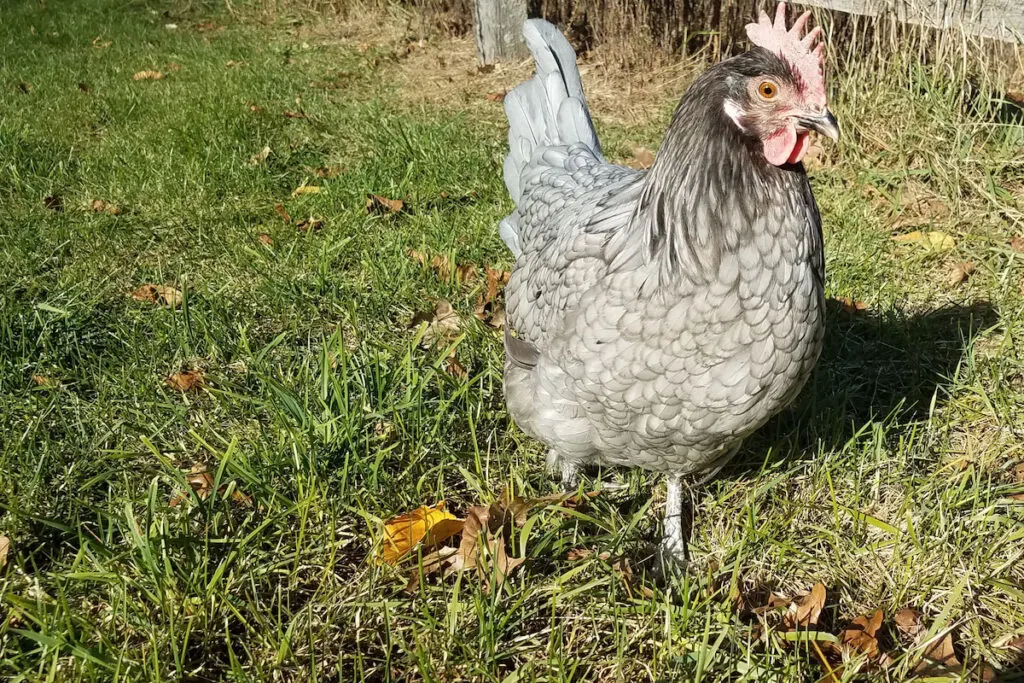
Andalusian chicken is indigenous to Andalusi, Southwestern Spain. It’s distinguished by its smooth white almond-shaped earlobes, bright red crest, and white skins.
The chickens lay around 160 to 200 medium to large white eggs annually. Since they are egg-laying breeds, they lay earlier than most other breeds.
While Blue Andalusian can be kept for eggs, it rarely broods, hence not a good mother.
The Mediterranean breed is best suited for areas with warm weather throughout the year. However, their rugged nature allows them to survive cold climates.
9. Naked Neck Chicken
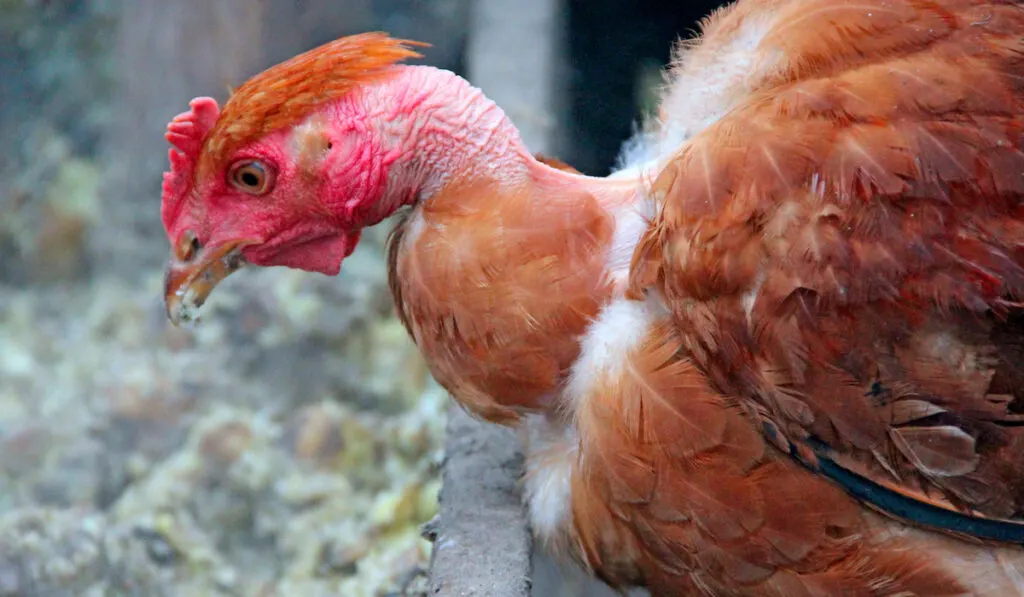
It’s easier to spot a Naked Neck chicken due to its bare neck, which resembles a turkey.
The dual-purpose breed originates from Transylvania and is one of the most unique-looking chicken breeds. They come in a color variety of white, black, buff, and red, including blue and cuckoo.
These chickens are modest egg layers and can give you around 150 to 200 medium to large light brown eggs annually.
Naked Necks thrive in hot climates since they experience low levels of heat stress.
They can also withstand cool weather, like other single-comb breeds. However, you may need to set up a draft-free and well-ventilated coop to protect them from the cold.
Takeaway
Identifying the perfect egg-laying chicken for Arizona can become simpler if you know your desired basic breed traits.
You can choose from the breeds we’ve listed above, as they are built to withstand the state’s environmental conditions.
Consider the breed’s adaptability to hot or cold climates and egg-laying capacity, depending on your intended use and available resources needed to keep them healthy and productive.
Resources
- https://azclimate.asu.edu/climate/
- https://www.weather.gov/psr/yearinreview2022#
- https://www.visitarizona.com/plan/weather/
- https://en.wikipedia.org/wiki/Naked_Neck
- https://www.oregon.gov/ode/students-and-family/childnutrition/F2S/Documents/10mistakes[1].pdf
- https://poultry.extension.org/articles/poultry-management/managing-backyard-chickens-during-extreme-summer-temperatures/

